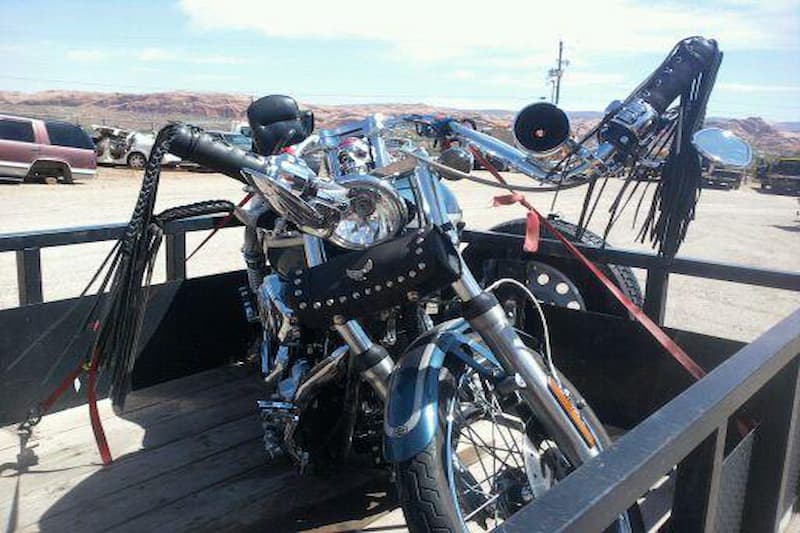Motorcycle Accident Statistics
Motorcyclists face greater risks than most drivers during accidents. Organizations like the National Highway Traffic and Safety Administration (NHTSA) and the Governors Highway Safety Association (GHSA) have researched patterns regarding motorcycle accidents to combat fatalities. Traffic Safety Facts from the NHTSA state that:
- During weekdays, most motorcyclists are killed from 3 p.m. to 6 p.m., followed by 6 p.m. to 9 p.m.
- During the weekend, the highest death rate is from 6 p.m. to 9 p.m., followed by 9 p.m. to midnight.
- 58% of fatalities occur to riders wearing helmets, while 42% occur to victims who are not wearing helmets.
- Motorcyclists of all ages have been found to be driving without a license at the time of an accident.
The Governors Highway Safety Association reports that:
- 35% of fatal motorcycle crashes involve speeding. That’s a higher rate than the 23% of passenger car accidents that are speeding-related and 19% for light truck drivers.
- Helmets prevent 37% of motorcycle operator fatal injuries in a crash and 41% of fatal passenger injuries.
- 29% of fatally injured motorcycle riders have a blood alcohol concentration above a .08.
Good Guys Injury Law encourages all motorcyclists and drivers to be safe while operating a motor vehicle. Accidents can be devastating and cause unforeseen consequences and heartache for everyone involved. To avoid accidents, motorcyclists are reminded to wear the proper reflective riding gear to be sure drivers are able to see them. In addition, motorcyclists should wear a helmet.
Table of Contents
Utah Motorcycle Laws
Motorcycle laws protect riders and others on the road. Here are the motorcycle laws that you need to know.
What Laws Govern Riding a Motorcycle in Utah?
According to the Utah Motorcycle Operator Manual, riders must:
Sitting and Passengers
- Sit in a normal position
- Carry only passengers if the bike is built for more than one person
- Ensure that passengers do not obstruct their vision or control
- Have both hands on the handlebars at all times
Helmets
- Any riders under 21 must wear a helmet (Utah Code 41-6a-1505)
Lane Sharing, Splitting, and Filtering
- Motorcycle lane sharing or splitting is not allowed in the state of Utah.
- Lane filtering is legal in the State of Utah if certain conditions are present. The road must have two or more adjacent lanes in the same direction of travel with a total speed limit of 45 mph or less. The movement must be made safely at no more than 15 mph with the other vehicles stopped completely.
Equipment
- Handlebars may be no more than shoulder height
- The bike must have a headlamp and a tail lamp
- There must be brakes and a horn
- Passengers must have footrests

Laws for Motorcycle Accident Insurance and Claims
A motorcycle must specifically be listed on a driver’s insurance policy in order to be covered. A person’s personal injury protection (PIP) policy does not cover the driver of a motorcycle. However, the driver can seek similar coverage if the insurance company offers it. This no-fault insurance policy covers any passengers on the motorcycle.
Is Failing To Wear a Helmet Evidence of Negligence in a Motorcycle Accident Claim?
No, failing to wear a helmet is not evidence of negligence in a motorcycle accident claim. If a person is involved in an accident, the act of not wearing a helmet does not mean they were negligent. Failing to wear a helmet cannot be admitted against the motorcycle driver as evidence of negligence.
Motorcycle Negligence and Case Examples
Negligence on the part of the motorcyclist can impact the outcome of a compensation claim. In one case, two boys were riding a scooter built for one rider. A driver did not see them and turned right into them. The boys were injured, so they sued the driver. However, because the law required them to only have one person on this particular scooter, they lost their case.
In another case, a motorcycle passed a large truck turning left. Another car traveling in the opposite direction had already started to turn left. The motorcycle hit the back of the car and sued. The jury found him 100% negligent because it was his duty to approach the intersection with caution.
With all of the specific regulations and the confusing nature of insurance coverage, you may feel overwhelmed at the idea of dealing with your accident. Our attorneys can help. Please call us at 801-506-0800 for a free consultation. We’ll take care of the insurance companies so that you can focus on healing and recovery.